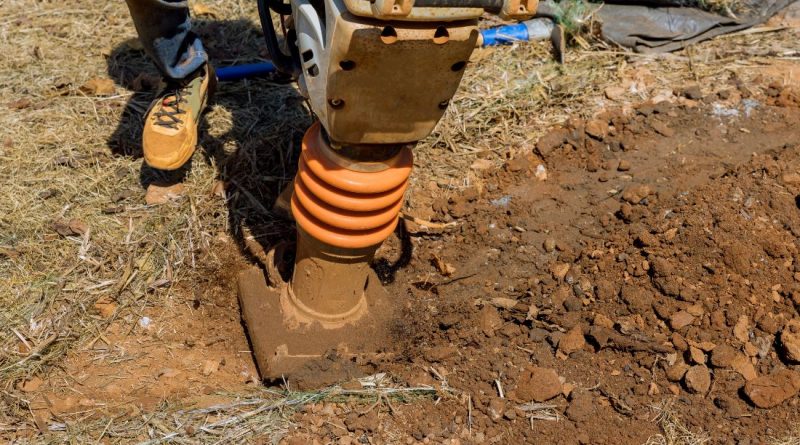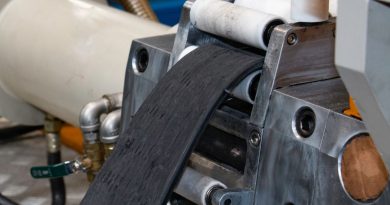EPDM Rubber Sleeve: The Versatile Solution for Your Projects
When considering a reliable and durable material for various projects, the EPDM rubber sleeve stands out as an outstanding option due to its flexibility and strong performance. This synthetic rubber is widely used across many industries, making it a top choice for different applications. This article covers everything you need to know about EPDM rubber sleeves, including their composition, benefits, installation tips, and maintenance practices, supported by insights and experiences from industry professionals.
What Is an EPDM Rubber Sleeve? Understanding Its Composition and Benefits
What Is EPDM Rubber?
EPDM stands for Ethylene Propylene Diene Monomer. This synthetic rubber is renowned for its excellent weather resistance, flexibility, and durability. EPDM’s unique makeup includes ethylene, propylene, and diene, offering remarkable properties suitable for diverse environments. According to the American Chemical Society, EPDM is particularly valued in applications where weather and environmental exposure are significant concerns.
Composition of EPDM Rubber Sleeves
EPDM rubber sleeves are composed of high-quality EPDM rubber, specifically designed to endure extreme temperatures, UV exposure, and various environmental conditions. This composition ensures that the sleeves maintain their strength over time, providing reliable performance even in harsh settings.
Benefits of EPDM Rubber Sleeves
Weather Resistance: EPDM rubber sleeves resist ozone, UV radiation, and extreme temperatures, making them ideal for outdoor uses. A study published by the Journal of Applied Polymer Science highlights EPDM’s superior weathering properties compared to other materials, including neoprene sleeving.
Flexibility: Their flexible nature allows them to fit various shapes and sizes easily, making installation straightforward.
Chemical Resistance: EPDM demonstrates excellent resistance to many chemicals, oils, and solvents, making it suitable for various industrial applications.
Durability: These sleeves are designed to last, resisting wear and tear, which reduces the need for frequent replacements.
Cost-Effectiveness: Given their longevity and performance, EPDM rubber sleeves often provide a cost-effective solution for many projects.
In short, the EPDM rubber sleeve is a versatile and dependable option for those needing a durable and flexible rubber sleeve.
Common Applications of Neoprene Sleeving in Various Industries
Automotive Industry
In the automotive sector, EPDM rubber sleeves are commonly used for:
- Hoses: They often serve in coolant and heater hoses due to their thermal stability and aging resistance.
- Seals and Gaskets: EPDM is ideal for creating seals that keep moisture and contaminants out, prolonging the life of automotive components.
Construction and Building
EPDM rubber sleeves are widely used in construction projects for:
- Roofing Systems: They are integral to EPDM roofing systems, known for their durability and energy efficiency.
- Waterproofing: Their water resistance makes them perfect for waterproofing basements and foundations.
Electrical and Electronics
In the electrical industry, these sleeves play key roles, such as:
- Insulation: EPDM rubber sleeves provide excellent insulation for wiring, preventing electrical shorts.
- Protection: They shield sensitive electronic components from external elements.
Industrial Applications
In industrial settings, EPDM rubber sleeves are used for:
- Piping: They cover pipes to prevent corrosion and wear.
- Vibration Dampening: Their flexibility effectively absorbs vibrations, protecting machinery and equipment.
Medical Applications
In medical contexts, EPDM rubber sleeves also find use:
- Medical Devices: Their chemical resistance and flexibility make them suitable for various medical devices, ensuring safety and reliability.
Overall, the versatility of EPDM rubber sleeves makes them a preferred choice across many industries, proving their value in diverse applications.
Key Advantages of Using a Flexible Rubber Sleeve Over Other Materials
Superior Weather Resistance
One standout feature of EPDM rubber sleeves is their excellent weather resistance. Unlike neoprene sleeving, which can degrade under UV exposure and extreme temperatures, EPDM maintains its properties over time. This makes it a great choice for outdoor applications where the weather can be unpredictable.
Enhanced Chemical Resistance
EPDM rubber sleeves also show better chemical resistance than many other materials. This makes them suitable for environments where exposure to oils, solvents, and harsh chemicals is common. The durability of EPDM allows it to perform reliably without losing its integrity.
Cost-Effectiveness
When comparing EPDM rubber sleeves to alternatives like neoprene or silicone sleeves, it’s important to consider long-term costs. EPDM’s longevity and minimal maintenance needs can lead to significant cost savings over time, making it a smart choice for businesses and contractors looking to optimize budgets.
Flexibility and Ease of Installation
EPDM rubber sleeves are incredibly flexible, allowing for easy installation, even in tight spaces. This flexibility reduces the time and effort needed for installation, making it practical for contractors and DIY enthusiasts alike.
Environmentally Friendly
Lastly, EPDM rubber is eco-friendly. Being recyclable and free from harmful chemicals, it aligns with sustainable practices, appealing to environmentally conscious consumers and businesses.
In summary, the advantages of using EPDM rubber sleeves far outweigh those of other materials, making them a superior choice for numerous applications.
How to Choose the Right EPDM Rubber Sleeve for Your Project
Determine Your Requirements
Before selecting an EPDM rubber sleeve, assess your project’s specific needs:
- Temperature Range: Consider the temperature extremes the sleeve will face. EPDM typically withstands temperatures from -40°F to 250°F.
- Chemical Exposure: Identify any chemicals or solvents that the sleeve will contact. EPDM’s chemical resistance varies, so understanding your environment is crucial.
Size and Fit
Choosing the right size is essential for the sleeve’s effectiveness:
- Diameter: Measure the diameter of the component to ensure a snug fit.
- Length: Consider the length needed to cover the application adequately without excess material.
Thickness and Durability
The thickness of the EPDM rubber sleeve also affects its performance:
- Standard Thickness: Most applications require standard thickness, but thicker sleeves offer added durability for high-stress environments.
- Reinforced Options: Look for reinforced EPDM rubber sleeves for added strength in demanding applications.
Supplier Reputation
When purchasing EPDM rubber sleeves, source them from reputable suppliers. Check customer reviews, certifications, and product specifications to ensure you get a high-quality product.
Cost Considerations
Finally, consider your budget. While EPDM rubber sleeves may cost a bit more than alternatives like neoprene, their longevity and durability often justify the investment.
By carefully assessing these factors, you can choose the right EPDM rubber sleeve to meet your project’s unique needs effectively.
Installation Tips:
| Factor | Considerations | Importance |
| Temperature Range | Assess the extremes the sleeve will face (e.g., -40°F to 250°F). | Ensures the sleeve can operate effectively in the intended environment. |
| Chemical Exposure | Identify potential chemicals or solvents the sleeve will contact. | Guarantees that the material will withstand any chemical interactions without degradation. |
| Size and Fit | Measure diameter and length for a snug fit. | A proper fit prevents leaks and enhances the sleeve’s performance. |
| Thickness and Durability | Choose standard or reinforced options based on application stress levels. | Thicker sleeves offer better durability for high-stress environments. |
| Supplier Reputation | Source from reputable suppliers with good reviews and certifications. | Ensures you receive a high-quality product that meets specifications. |
| Cost Considerations | Evaluate the long-term cost versus initial investment. | Helps in budgeting and ensures value for money based on sleeve longevity. |
| Installation Techniques | Use lubricants, ensure proper alignment, and secure fastening methods. | Proper installation maximizes performance and minimizes risk of damage or leaks. |
| Post-Installation Checks | Conduct visual inspections and functionality tests after installation. | Ensures that the sleeve is correctly installed and functioning as intended. |
Maximizing the Performance of Your EPDM Rubber Sleeve
Preparation Steps
Before installation, proper preparation ensures optimal performance:
- Clean the Surface: Make sure the area where the sleeve will be installed is clean and free from debris or contaminants.
- Inspect the Sleeve: Check the EPDM rubber sleeve for any defects or damage before use.
Installation Techniques
- Use of Lubricants: Applying a lubricant can ease the installation process, especially for tight fittings. Ensure the lubricant is compatible with EPDM rubber to avoid damage.
- Proper Alignment: Carefully align the sleeve over the component for a snug fit. Misalignment can lead to leaks or reduced performance.
- Secure Fastening: Depending on the application, you may need to secure the sleeve with clamps or ties. Ensure they are firmly fastened without over-tightening, which can damage the sleeve.
Post-Installation Checks
After installation, perform checks to ensure everything is in place:
- Visual Inspection: Look for gaps or misalignments that could compromise the sleeve’s effectiveness.
- Functionality Test: If the sleeve is part of a larger system (like a hose assembly), test the system under normal operating conditions to ensure no leaks or issues.
By following these installation tips, you can maximize the performance of your EPDM rubber sleeve, ensuring it effectively serves its intended purpose.
Maintenance and Care for Longevity: Keeping Your EPDM Products in Top Shape
Regular Inspections
To ensure the longevity of your EPDM rubber sleeves, regular inspections are crucial:
- Visual Checks: Regularly examine the sleeves for signs of wear, cracking, or degradation, especially in outdoor applications.
- Functional Testing: If the sleeves are part of a critical system, periodic functional tests can help detect issues early.
Cleaning Practices
Keeping your EPDM sleeves clean is essential for maintaining performance:
- Use Mild Detergents: When cleaning, use mild detergents and water. Avoid harsh chemicals that could degrade the rubber.
- Avoid Abrasive Materials: Use soft cloths or sponges to clean, as abrasive materials can scratch or damage the sleeve’s surface.
Protecting from UV Exposure
While EPDM rubber is known for UV resistance, extended exposure can lead to degradation:
- Use Covers: If possible, cover the sleeves with protective covers when not in use to shield them from direct sunlight.
- Apply UV Protectants: Consider using UV protectants designed for rubber products to enhance longevity.
Storage Recommendations
If you need to store EPDM rubber sleeves, follow these guidelines:
- Cool, Dry Place: Store them in a cool, dry location away from direct sunlight and extreme temperatures.
- Avoid Compression: Do not stack heavy items on top of the sleeves to prevent deformation.
Replacement Considerations
Even with proper care, EPDM rubber sleeves will eventually need replacement:
- Monitor Performance: Track sleeve performance over time. If you notice decreased efficiency, it may be time to replace them.
- Plan for Replacement: Incorporate sleeve replacement into your maintenance schedule to avoid unexpected downtimes.
By following these maintenance and care guidelines, you can significantly extend the lifespan of your EPDM rubber sleeves, ensuring they continue to perform effectively in your projects.
In conclusion, EPDM rubber sleeves offer a versatile and reliable solution for various applications across multiple industries. Their unique composition and numerous benefits make them a preferred choice for contractors and DIY enthusiasts alike. Whether you are using them in the automotive, construction, or medical fields, understanding how to choose, install, and maintain these sleeves will ensure you get the most out of your investment. With proper care, EPDM rubber sleeves can serve you well for many years, making them a smart choice for your next project. For real-world insights, consider consulting professionals or reviewing case studies that showcase the successful integration of EPDM rubber sleeves in various applications.

